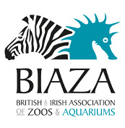Blog by Discovery and Learning Team – Aquarium Host, Emily Price.
Gather round folks, it’s time for a tour of the rocky shore where together we’re going to explore the pools and search for animals that can live within them. Let’s go on an adventure.
Imagine you’re as inland as you can be on the rockpools, facing the sea. You’re now standing at the splash zone. Around your feet are things which are land-based but can deal with a lot of salt spray in the air and the occasional splash of saltwater. They’re only ever submerged when there’s a storm. These things are mostly lichens which can trap water in their bumpy flakes; among them are periwinkles which have a door they can shut to trap water within their shells, only opening it to wander into a pool to feed. These organisms can also cope with massive temperature changes, especially in the summer when the water is a cool 14° but the rocks heat to over 30° at the top of the day.
Take a few (careful) steps towards the sea till you are surrounded by filled pools and seaweeds (aka algae). You have now found the intertidal zone; the part of the shore that gets covered by sea water every 6 hours, making it a very dynamic sand fascinating environment. The animals you find here are locked in a never-ending battle between finding somewhere to rest that has the right conditions for them and finding somewhere they can (a) find food and (b) not be eaten. The intertidal is a place of environmental stress and competition all wrapped up together till the tide comes in, all the animals go their separate ways for six hours and anemones can finally relax and open up once again. When the tide comes in the battle continues. The animals in particular to look out for are shore crabs and blennies. Shore crabs like to hide in the sand at the bottom of pools or under rocky out-crops, pinching any food they can with their claws. The Blennies are a little harder to find as they have awesome camouflage and stay very still unless disturbed. If they are disturbed they can use specialised fins to wriggle from one pool to another making them hard to catch with a net.
Continue walking towards to sea till the refreshingly cool waves are lapping at your feet, you’re now entering the sub tidal zone which is submerged throughout the day and night. The animals that live here have a pretty stable environment so only need to worry about each other. There are a wide variety of algae here which form canopies where you’ll find all sorts of animals like wrasse and sea urchins hiding underneath.
To conclude our whistle- stop tour of the rocky shore I’d like to leave you with the thought that there is always a lot more going on than you think. At first glance, the rocky shore can look rather plain but if you take the time to really look into the pools you can find all sorts of activity going on in each one. I also hope that now you know a little more about what causes each animal or algae to live where it does you can take that further and work out what animals are interacting with each other, does the anemone mind the little shore crab resting beside it? How does the shrimp react to a snail creeping over and stealing food? You can answer these questions and come up with more yourself as you explore the rocky shore.














